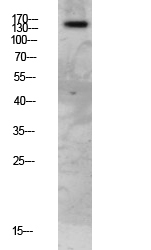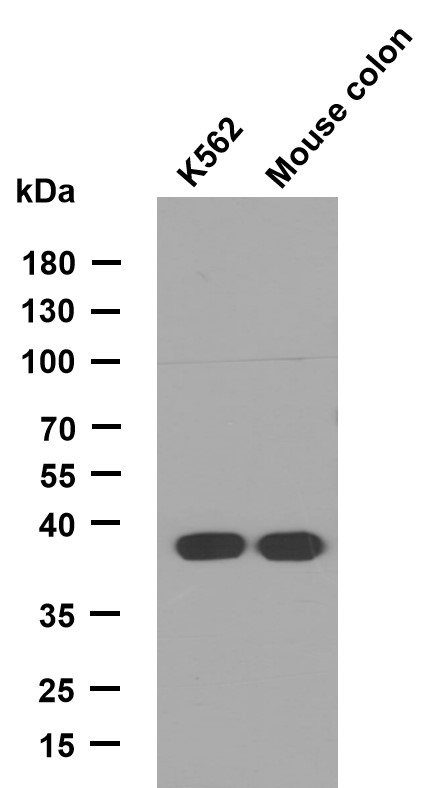Seprase Polyclonal Antibody
- Catalog No.:YT4244
- Applications:WB;IHC;IF;ELISA
- Reactivity:Human;Mouse;Rat
- Target:
- Seprase
- Gene Name:
- FAP
- Protein Name:
- Seprase
- Human Gene Id:
- 2191
- Human Swiss Prot No:
- Q12884
- Mouse Gene Id:
- 14089
- Mouse Swiss Prot No:
- P97321
- Immunogen:
- The antiserum was produced against synthesized peptide derived from human FAP-1. AA range:331-380
- Specificity:
- Seprase Polyclonal Antibody detects endogenous levels of Seprase protein.
- Formulation:
- Liquid in PBS containing 50% glycerol, 0.5% BSA and 0.02% sodium azide.
- Source:
- Polyclonal, Rabbit,IgG
- Dilution:
- WB 1:500 - 1:2000. IHC: 1:100-300 ELISA: 1:20000. IF 1:100-300 Not yet tested in other applications.
- Purification:
- The antibody was affinity-purified from rabbit antiserum by affinity-chromatography using epitope-specific immunogen.
- Concentration:
- 1 mg/ml
- Storage Stability:
- -15°C to -25°C/1 year(Do not lower than -25°C)
- Other Name:
- FAP;Seprase;170 kDa melanoma membrane-bound gelatinase;Fibroblast activation protein alpha;Integral membrane serine protease
- Observed Band(KD):
- 90kD
- Background:
- The protein encoded by this gene is a homodimeric integral membrane gelatinase belonging to the serine protease family. It is selectively expressed in reactive stromal fibroblasts of epithelial cancers, granulation tissue of healing wounds, and malignant cells of bone and soft tissue sarcomas. This protein is thought to be involved in the control of fibroblast growth or epithelial-mesenchymal interactions during development, tissue repair, and epithelial carcinogenesis. Alternatively spliced transcript variants encoding different isoforms have been found for this gene. [provided by RefSeq, Apr 2014],
- Function:
- catalytic activity:Degrades gelatin and heat-denatured type I and type IV collagen, but not native type I or type IV collagen. Does not cleave laminin, fibronectin, fibrin or casein.,function:May have a role in tissue remodeling during development and wound healing, and may contribute to invasiveness in malignant cancers.,induction:In fibroblasts at times and sites of tissue remodeling during development, tissue repair, and carcinogenesis.,PTM:N-glycosylated.,PTM:The N-terminus may be blocked.,similarity:Belongs to the peptidase S9B family.,subcellular location:Found in cell surface lamellipodia, invadopodia and on shed vesicles.,subunit:Homodimer, or heterodimer with DPP4. The monomer is inactive.,tissue specificity:Fibroblast specific.,
- Subcellular Location:
- [Prolyl endopeptidase FAP]: Cell surface . Cell membrane ; Single-pass type II membrane protein . Cell projection, lamellipodium membrane ; Single-pass type II membrane protein . Cell projection, invadopodium membrane ; Single-pass type II membrane protein . Cell projection, ruffle membrane ; Single-pass type II membrane protein . Membrane ; Single-pass type II membrane protein . Localized on cell surface with lamellipodia and invadopodia membranes and on shed vesicles. Colocalized with DPP4 at invadopodia and lamellipodia membranes of migratory activated endothelial cells in collagenous matrix. Colocalized with DPP4 on endothelial cells of capillary-like microvessels but not large vessels within invasive breast ductal carcinoma. Anchored and enriched preferentially by integrin alpha-3/bet
- Expression:
- Expressed in adipose tissue. Expressed in the dermal fibroblasts in the fetal skin. Expressed in the granulation tissue of healing wounds and on reactive stromal fibroblast in epithelial cancers. Expressed in activated fibroblast-like synoviocytes from inflamed synovial tissues. Expressed in activated hepatic stellate cells (HSC) and myofibroblasts from cirrhotic liver, but not detected in normal liver. Expressed in glioma cells (at protein level). Expressed in glioblastomas and glioma cells. Isoform 1 and isoform 2 are expressed in melanoma, carcinoma and fibroblast cell lines.
Identification and targeting of cancer-associated fibroblast signature genes for prognosis and therapy in Cutaneous melanoma. COMPUTERS IN BIOLOGY AND MEDICINE Degui Wang WB,IF Mouse 1:500,1:50 NIH/3T3 cell
Identification and targeting of cancer-associated fibroblast signature genes for prognosis and therapy in Cutaneous melanoma. COMPUTERS IN BIOLOGY AND MEDICINE Degui Wang WB,IF Mouse 1:500,1:50 NIH/3T3 cell
Cancer-associated fibroblasts-induced remodeling of tumor immune microenvironment via Jagged1 in glioma CELLULAR SIGNALLING Qing Zhang IF Human 1:200 Cancer-associated fibroblasts (CAFs)
- June 19-2018
- WESTERN IMMUNOBLOTTING PROTOCOL
- June 19-2018
- IMMUNOHISTOCHEMISTRY-PARAFFIN PROTOCOL
- June 19-2018
- IMMUNOFLUORESCENCE PROTOCOL
- September 08-2020
- FLOW-CYTOMEYRT-PROTOCOL
- May 20-2022
- Cell-Based ELISA│解您多样本WB检测之困扰
- July 13-2018
- CELL-BASED-ELISA-PROTOCOL-FOR-ACETYL-PROTEIN
- July 13-2018
- CELL-BASED-ELISA-PROTOCOL-FOR-PHOSPHO-PROTEIN
- July 13-2018
- Antibody-FAQs
- Products Images
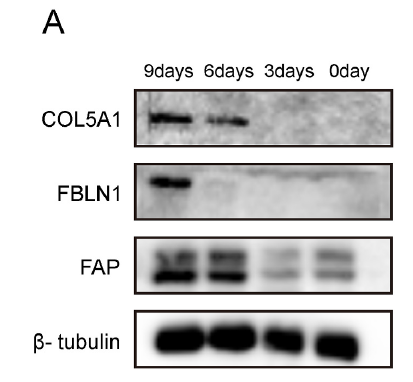
- Identification and targeting of cancer-associated fibroblast signature genes for prognosis and therapy in Cutaneous melanoma. COMPUTERS IN BIOLOGY AND MEDICINE Degui Wang WB,IF Mouse 1:500,1:50 NIH/3T3 cell

- Identification and targeting of cancer-associated fibroblast signature genes for prognosis and therapy in Cutaneous melanoma. COMPUTERS IN BIOLOGY AND MEDICINE Degui Wang WB,IF Mouse 1:500,1:50 NIH/3T3 cell
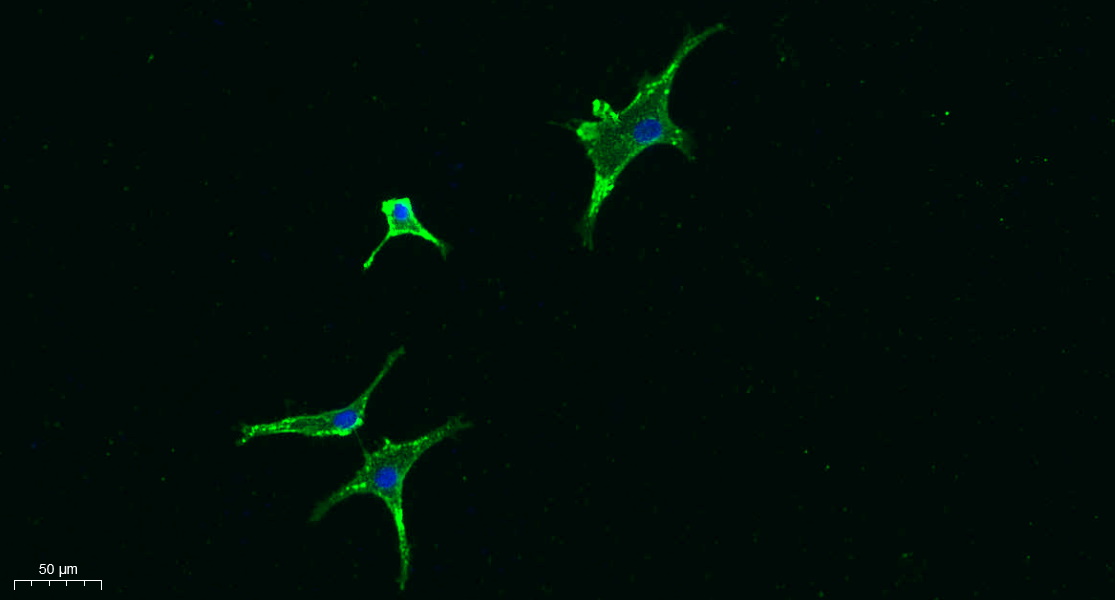
- Immunofluorescence analysis of A549. 1,primary Antibody was diluted at 1:200(4°C overnight). 2, Goat Anti Rabbit IgG (H&L) - Alexa Fluor 488 Secondary antibody was diluted at 1:1000(room temperature, 50min).3, Picture B: DAPI(blue) 10min.
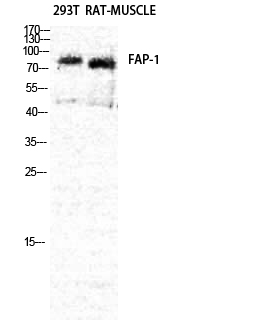
- Western Blot analysis of RAT-MUSCLE 293T cells using Seprase Polyclonal Antibody diluted at 1:2000
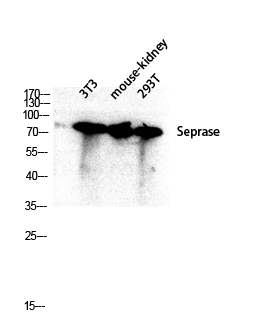
- Western blot analysis of 3T3 mouse-kidney 293T lysis using Seprase antibody. Antibody was diluted at 1:2000
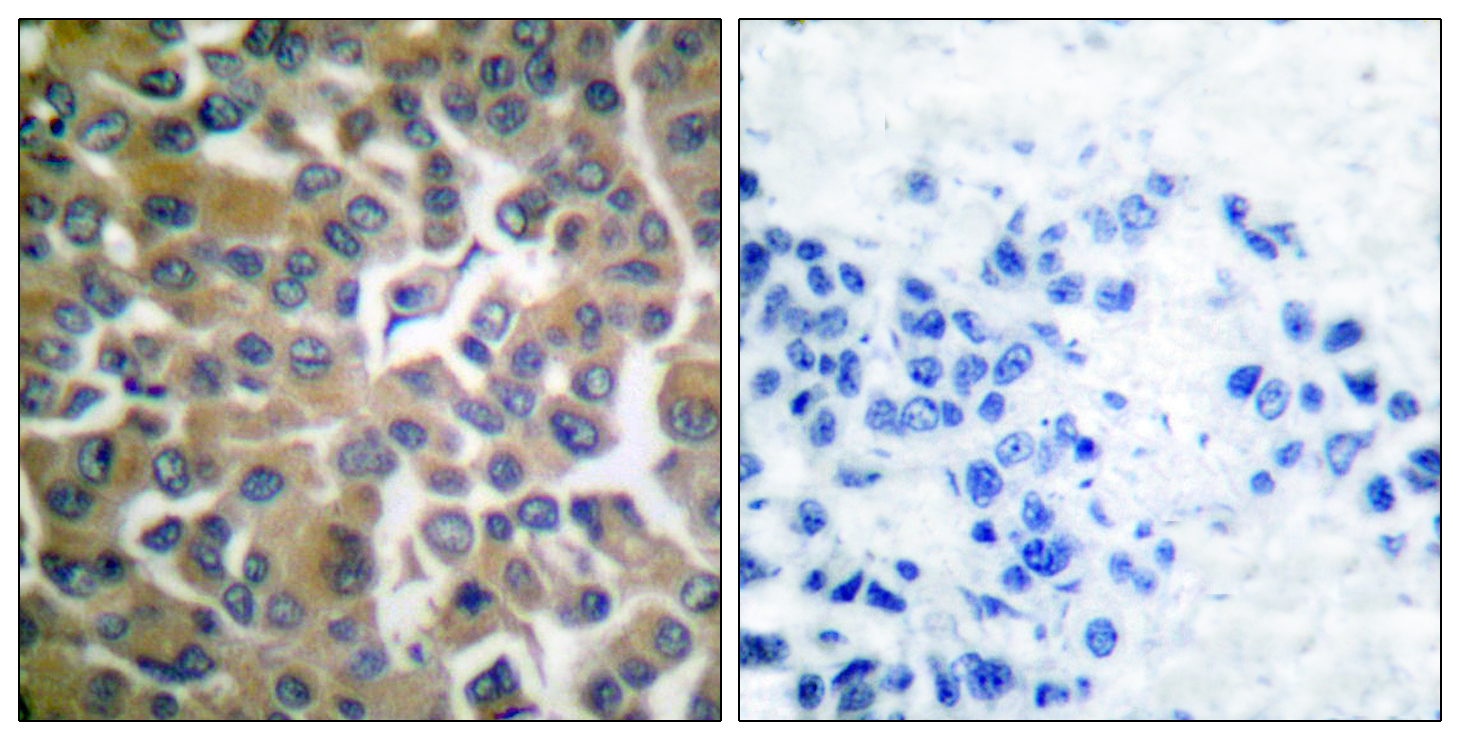
- Immunohistochemistry analysis of paraffin-embedded human breast carcinoma tissue, using FAP-1 Antibody. The picture on the right is blocked with the synthesized peptide.
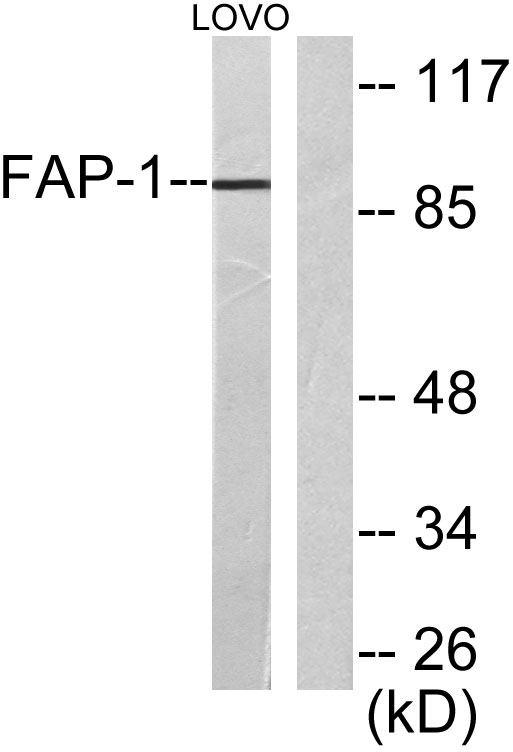
- Western blot analysis of lysates from LOVO cells, using FAP-1 Antibody. The lane on the right is blocked with the synthesized peptide.

